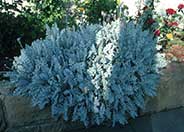
Common name:Dusty Miller
Botanical name:Centaurea cineraria
This perennial plant won't grow more than 1' tall and has large, silvery/white leaves with blue, purple, or yellow flowers that bloom in summer.
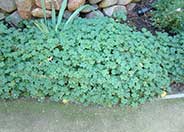
Common name:Biokovo Cranesbill
Botanical name:Geranium X cantabrigiense 'Biokovo'
This Cranesbill has white flowers with pink veins and stamens. It spreads by means of underground roots. It has beautiful green foliage.
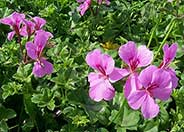
Common name:Ivy Geranium
Botanical name:Pelargonium peltatum
Clouds of single or double flowers are produced from spring through fall on this plant, which should be planted in areas that receive afternoon shade in warm inland valleys. Foliage resembles ivy (pointed lobes) and are bright green and glossy. Ivy Geranium looks great in hanging baskets, window boxes or in planters. Do not use for erosion control.
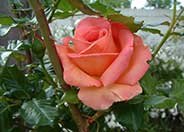
Common name:Hybrid Tea Rose (selections)
Botanical name:Rosa Hybrid Tea varieties
These shrubs and vines are the most loved in the Western USA and are very resilient. They come in a wide variety of sizes and colors and are easy to maintain with proper care. They can be used in a water-conserving garden with careful attention to irrigation practices.
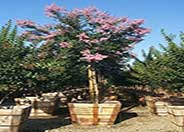
Common name:Muskogee Crape Myrtle
Botanical name:Lagerstroemia 'Muskogee'
This Crape Myrtle hybrid is a popular tree which grows to 25' tall and 12' wide. It blooms with lavender flowers in the summer; leaves turn red in fall. It is mildew resistant and does well in areas with hot summers. Crape Myrtles bloom on new wood so prune in winter or early spring to increase flowering. - Carolyn Shaffer, Dudek and Associates
Designer: Nan Simonsen Nanscapes
Photographer: GardenSoft
Practice grass-cycling by leaving short grass clippings on lawns after mowing, so that nutrients and organic matter are returned to the soil.
Apply as little fertilizer as possible.
If you use fertilizer make sure it stays on the landscape, and carefully water it in so there is NO runoff.
Develop healthy soil for plants that are vigorous and naturally pest-resistant.